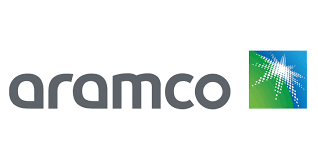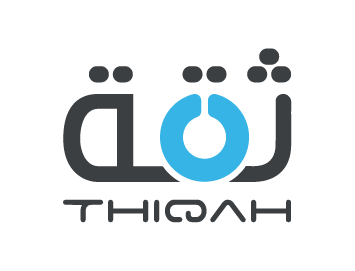Imagine this dilemma: you’ve identified a glaring skills gap in your team, but sending employees to public workshops feels inefficient.
The costs add up, the content is often generic, and employees spend hours traveling instead of contributing to projects.
This is where in-house training benefits come into play—a strategic solution that saves money, strengthens teams, and ensures learning is directly relevant to your organization.
At its core, in-house training is a form of private team training delivered exclusively to your employees.
Sessions can take place at your own office, a dedicated off-site location, or even online through virtual platforms.
Courses may be facilitated by your internal experts or external trainers brought in to address your team’s unique needs.
In this article, we’ll go beyond the surface to explore the strategic, financial, and cultural advantages of building internal training courses—and why this approach is rapidly becoming the preferred model for companies that want lasting impact.
Balanced Score Training Center is here to provide you with enough information about in-house training.
Strategic & Financial Benefits: The Business Case for In-House Training
In-house training does provide many benefits, including strategic and financial benefits.
Benefit 1: Unmatched Customization and Relevance
Unlike public workshops, which serve a mixed audience from different industries, in-house training ensures every minute of content speaks to your team’s reality.
This is the essence of custom corporate training—tailoring materials to align with your workflows, internal processes, and even company culture.
Employees don’t waste time deciphering abstract case studies; instead, they engage with scenarios drawn directly from your business challenges.
Benefit 2: Significant Cost Savings at Scale
When you break down costs, the financial appeal becomes obvious.
Public courses typically charge per person, which quickly escalates for larger groups.
In contrast, private team training often operates on a flat rate, meaning the per-head cost drops dramatically as more employees participate.
You also eliminate expenses for travel, accommodation, and daily allowances.
For organizations training five or more employees at once, in-house solutions usually win hands down.
Start learning today with our talent Management training courses.
Benefit 3: Addressing Confidential Issues Securely
Another overlooked advantage is confidentiality.
Certain discussions—like strategic planning, performance issues, or sensitive client cases—cannot be openly shared in a public forum.
In-house courses create a safe space where employees can speak candidly without fear of exposing company information.
This allows for deeper problem-solving and ensures sensitive strategies remain internal.
Benefit 4: Consistency of Message and Skills
When employees attend separate public workshops, they return with varied interpretations and mixed terminology.
In-house training resolves this by delivering a consistent message across the team.
Everyone learns the same methodology at the same time, which improves alignment, reduces confusion, and strengthens collaboration on future projects.
Team & Cultural Benefits: Investing in Your People
A work culture that is carefully built can be the best investment you ever made.
Benefit 5: A Major Boost to Team Morale and Cohesion
Training together is more than an educational experience—it’s a bonding opportunity.
Colleagues collaborate, solve challenges as a unit, and gain a shared sense of accomplishment.
This team-building effect fosters stronger professional relationships and boosts morale, making employees feel valued and supported.
Benefit 6: Unparalleled Convenience and Flexibility
Another clear in-house training benefit is logistical ease.
Rather than forcing employees to disrupt their schedules, sessions can be organized around project timelines.
Training can happen during quieter business periods, after key deliverables, or even split into shorter modules to reduce downtime.
This flexibility ensures learning happens without stalling productivity.
Benefit 7: Fosters a Stronger Learning Culture
Perhaps most importantly, internal training courses demonstrate a visible commitment to employee growth.
When organizations consistently invest in their teams, it nurtures a culture where learning is expected, encouraged, and celebrated.
Over time, this mindset creates more engaged employees, lower turnover, and higher organizational agility.
In-House Training vs. Public Workshops: A Quick Comparison
Which option can be the best option for your needs?
The following will help you decide:
Content Relevance
Public workshops provide broad, generalized knowledge, while in-house sessions are tailored to your company’s specific challenges, making learning more actionable.
Cost Per Employee
For one or two employees, public training may be cheaper.
But once you have five or more participants, in-house training delivers far greater value at a lower per-person cost.
Confidentiality
In-house training allows sensitive discussions to stay internal.
Public settings, on the other hand, limit what participants can share.
Networking Opportunities
Public courses allow employees to network with professionals from other industries.
While in-house lacks this cross-industry exposure, it replaces it with stronger internal networking and collaboration.
Team Building
In-house courses double as team-building experiences, while public workshops train individuals in isolation without strengthening workplace bonds.
How to Maximize the ROI of Your Internal Training Courses
ROI is the most crucial measurement for the success of training courses.
Start with a Clear Needs Analysis
Don’t organize training for the sake of it.
Begin with a detailed analysis of skill gaps, business challenges, and future growth needs.
This ensures the investment aligns with real strategic priorities.
Choose the Right Facilitator (Internal or External)
Not every subject requires outside help.
Some technical training may be best delivered by in-house experts, while leadership development or customer service may benefit from external trainers who bring fresh insights.
The key is choosing the right facilitator for the objective.
Check out our training courses in Kuala Lumpur.
Plan for Pre-Work and Post-Training Reinforcement
Learning doesn’t end with the last slide of a presentation.
Provide pre-work to prime employees for the session and post-training follow-ups to reinforce concepts.
Consider action plans, mentoring, or refresher sessions to make sure skills are applied consistently.
The Numbers Don’t Lie: Statistics on In-House Training
Research consistently highlights the measurable impact of private team training.
According to the Association for Talent Development (ATD), organizations that invest heavily in employee training see 24% higher profit margins compared to those that spend less.
A recent LinkedIn Workplace Learning Report also revealed that 94% of employees say they would stay longer at a company that invests in their career development.
Furthermore, companies that implement structured internal training courses report a 30–50% reduction in turnover rates, highlighting not only the cost savings but also the cultural stability these initiatives bring.
Conclusion: A Strategic Investment in Your Greatest Asset
In-house training benefits go far beyond cost savings.
From unmatched customization and confidentiality to stronger team bonds and a thriving learning culture, private team training is one of the most strategic investments a company can make.
Unlike public workshops, which are often one-size-fits-all, internal training courses allow organizations to directly shape the skills, behaviors, and culture they want to foster.
At the end of the day, training is not just an expense—it’s an investment in the people who drive your business forward.
By embracing custom corporate training, you build a workforce that is engaged, aligned, and prepared to tackle the challenges of tomorrow.
Contact us and start your in-house training journey.
Frequently Asked Questions (FAQ)
The following questions can help you understand more about in-house training.
1. What is the main advantage of in-house training?
The single biggest advantage is customization.
The ability to tailor training content, examples, and activities directly to your company’s goals and culture is something public workshops simply cannot replicate.
2. Is in-house training always cheaper?
Not always. If you need to train just one or two employees, public workshops may be more cost-effective.
But when training groups of five or more, in-house options almost always deliver better value on a per-person basis.
3. What are some examples of good topics for in-house training?
Great examples include leadership development, sales training using your company’s methodology, customer service protocols, new internal software rollouts, and strategic planning workshops.
4. Can in-house training be done online?
Absolutely. "In-house" refers to the audience, not the physical location.
Private team training can be delivered virtually, offering the same customization and confidentiality with added flexibility for remote teams.



















